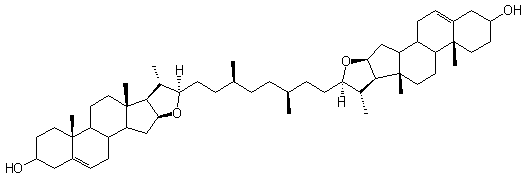
PROPERTIES AND STRUCTURE OF BILAYER LIPID MEMBRANES CONTAINING BOLAAMPHIPHILIC STEROID DIMER
Slawomir Kalinowski a,*, Zenon Lotowski b, Jacek W. Morzycki b
a Warmia and Mazury University in Olsztyn, Department of Chemistry, 10-957 Olsztyn, Poland
b University of Białystok, Institute of Chemistry, Al. J. Piłsudskiego 11/4, 15-443 Białystok, Poland
Keywords: Bolaamphiphilic steroid dimer; Bilayer lipid membrane; Membrane formation process; Electrostriction; Specific capacitance
The process of self-assembly and the electromechanical properties of bilayer lipid membranes (BLM) were investigated. The membranes were made of phosphatidylcholine with addition of bolaamphiphilic steroid dimer:

The membranes were formed using the Mueller-Rudin method. The formation of membranes in the presence of the dimer was much faster and they were more stable than those in the absence of the dimer. The membranes formed with this method usually contain residues of solvent used in the formation process which increases the thickness of a membrane. Thus, the membranes formed from pure phosphatidylcholine had an average thickness of 5.9 nm. The addition of steroid dimer to the forming solution caused the decrease of the thickness to 3.9 nm. An external voltage applied to the bilayer lipid membranes caused the electrostriction. The presence of bolaamphiphilic steroid dimer in the membranes decreased the electrocompressibility approximately 20 times. The dimer molecules spanned both monolayers of the membranes and caused the decrease of the membrane thickness during their formation. The presence of the dimer in the membrane limited the mobility of solvent inside the membrane. The membranes formed with the dimer have such properties as thickness, stability, resistance, breakdown voltage, electrocompressibility, time of formation more adequate for their application as a biomembrane model and support for sensors based on biomembrane molecules.